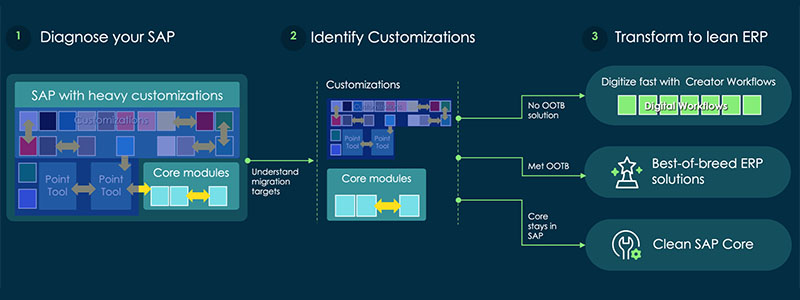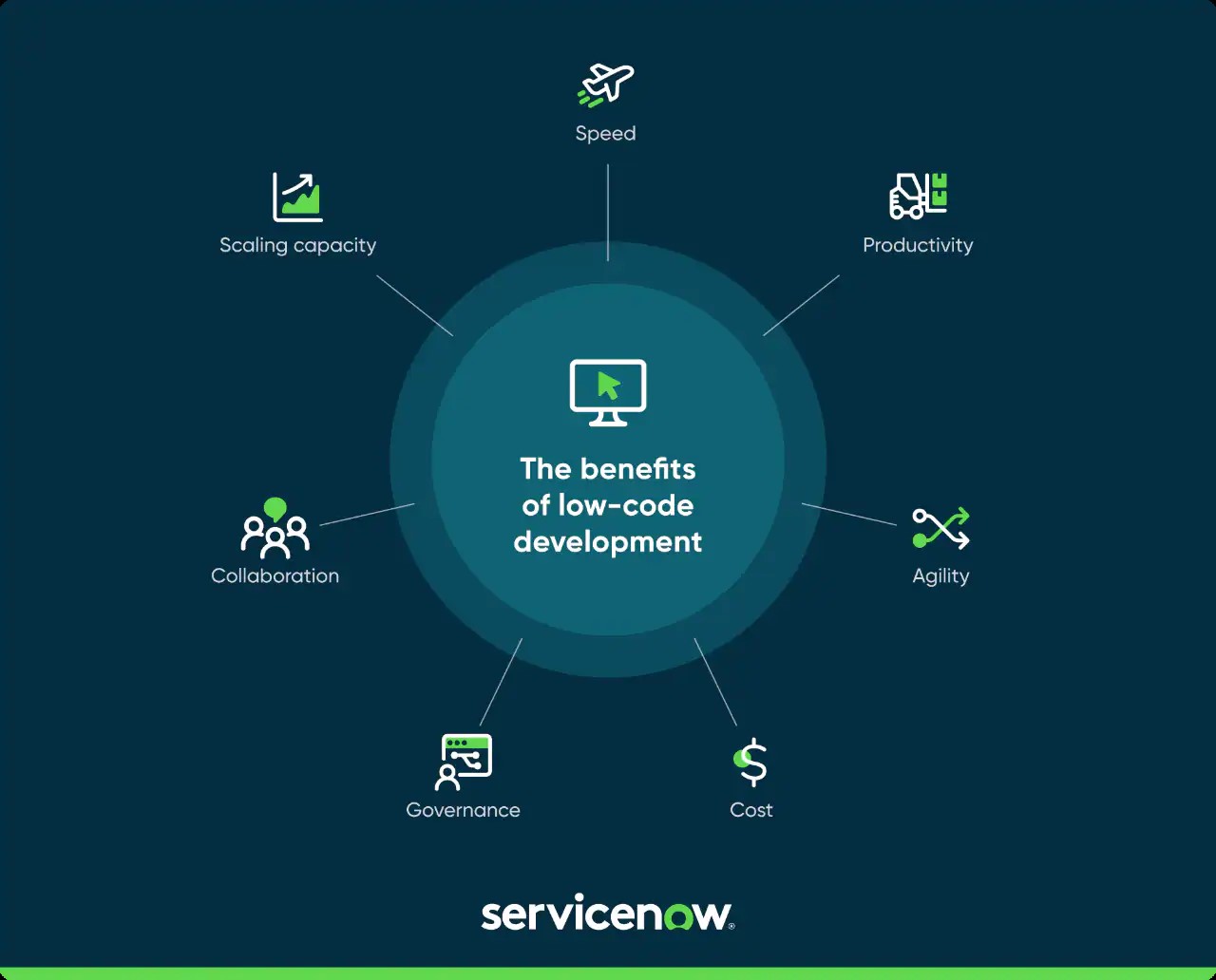As SAP power users navigate their ERP with speed and finesse, the average end user may have a different experience. More often than not, navigating and managing data in legacy ERP systems can be a heavy lift, and can lead to employee dissatisfaction due to friction within processes and difficulty deciphering data. Savvy employees may look for well-intentioned workarounds that end in increased technical debt and security risks.
It is not uncommon that after decades of maintaining and expanding their ERP platforms, many users now struggle with the complexity of data volumes and find it hard to innovate for the business. Indeed, they can’t transform the business fast enough because process transformation requires complex and risky changes to the core of ERP.
When it is time to migrate from on-premise to cloud-based SAP S/4HANA, enterprises face a new set of challenges. Often, the ERP customizations that were designed to make their SAP ERP work well for their business are now difficult, and in some cases even impossible, to replicate with ease. This can make a case for staying on-premise longer. However, with support for legacy SAP ending in 2027, many businesses are faced with difficult decisions to make.
Operating with a clean ERP core
To streamline ERP operations, cleaning the core or separating the system of record from the system of engagement can improve user experience, protect crucial data, and reduce friction with the use of low-code/no-code tools. But to get to a clean core, companies need to take stock of the ERP customizations that make their SAP suitable for their business needs.
ERP customization mining (ERP-CM) is a crucial part of this process. With ERP-CM, solution integration consultants can find application candidates with customized code in their ERP and rank candidate suitability for re-platforming onto the Now Platform.
Using ServiceNow as the system of engagement and SAP as the system of record, users can reap multiple benefits from a merger of these platforms. Let us examine this in depth.

Figure 1 : ERP Customization Mining and a clean core (Source: ServiceNow)
Innovation at scale with low-code solutions
First things first — what is low-code development? The traditional model of app development requires building solutions from the ground up and this can become a time-consuming and costly effort for many businesses. When an organization needs solutions fast, the opportunity to create powerful apps with a minimal amount of hand coding can be a less cumbersome solution with a high payoff.
The ServiceNow App Engine relies on graphical interfaces and configuration while handling the most time-consuming aspects of the development process, providing the agility that developers need to create quickly and efficiently. Low-code tools simplify the development process while also allowing more experienced developers to dive deeper, coding by hand when needed. Low-code developments offers numerous benefits, including:

Figure 2 : Key benefits driving adoption of low-code development platforms (Source: ServiceNow)
- Speed: Accelerated development and delivery are some of the most widely recognized advantages of low-code development.
- Productivity: Low-code streamlines the development process, allowing developers to build more apps in less time.
- Agility: Decreasing the time to deployment can provide business agility, promoting new digital initiatives that address business needs faster.
- Cost: Fewer developers can accomplish more, and even empower non-developers to build apps, reducing cost and increasing ROI.
- Governance: Low-code platforms provide a central location from which IT teams can monitor and control development with full visibility.
- Collaboration: The single location system also promotes better collaboration between developers, even working on the same modules at the same time.
- Scaling capacity: Employees with limited technical background can have the power to develop, using prebuilt functionalities in the low-code platform to further innovation.
In summary, we take a pragmatic better together approach that does not simply consider migrating everything to ServiceNow. Not all workloads are suitable.
In broad terms, we find better fits for ServiceNow redevelopment where processes involve end-to-end automations or ‘human-in-loop workflows, where there are some forms of cross-system or cross-functional event-driven automation, or where tight integrations with both SAP and non-SAP systems are required with real time data exchanges. Or if you have multiple role-based personable user experiences to drive productivity and efficiency that sit on top of one or more systems as a layer of action or engagement.
But we recognize that there are still processes that are best retained in SAP, not necessarily in the core- but lifted out into the SAP BTP tool, when we are still using complex SAP computational logic that is already in the platform like pricing procedures or advanced planning tools. Another instance is when we require SAP config base controls and system behaviors.
Enhance agility without sacrificing data security
With developers working in the system of engagement on the Now platform, there are fewer concerns about data security in the system of record, SAP. Working with SAP data in ServiceNow provides real-time access to information without the possibility of deleting or overwriting critical information in the core. The lightened risk burden, coupled with the decreased time to value from low-code development, can lead to faster business outcomes with less overhead.
In some cases, completely prebuilt no-code solutions may be suitable for enterprise needs. Using ServiceNow’s Creator Workflows, prebuilt templates can resolve challenges for customizing user experience. These no-code instances can empower citizen developers, who are closer to the business than the technology, giving them the power to create their own solutions for navigating company data.
Make the most of your SAP modernization or migration journey
Offerings from ServiceNow can make your modernization or migration process easier, more transparent, and more manageable with guidance from experts versed in both SAP and ServiceNow.
ElevateNow for SAP is a powerful solution from Eviden that provides a wealth of knowledge for ERP solutions, whether an enterprise is in the process of migrating to SAP S/4HANA or looking to elevate their employee experience.
Merging ServiceNow with SAP, Eviden’s Elevate Now for SAP helps clients identify and eliminate manual, time-consuming and error-prone processes from their existing ERP systems and port these complex innovations into a more elegant user engagement layer. This can be done before, after or during a migration from on premise legacy ECC to a modern S4 HANA instance.
>> Connect with me to discuss how global players are experiencing seamless ERP migrations and SAP modernizations.
>> Learn more about the combined powerhouse of ServiceNow and SAP – Eviden’s ElevateNow for SAP.